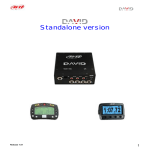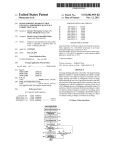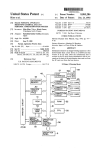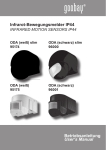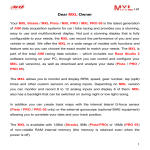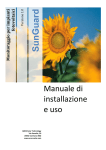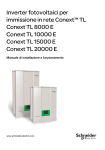Download System for recording identical electronic and photographic images
Transcript
US005389984A United States Patent [191 [11] [45] Lovenheim Patent Number: Date of Patent: 5,389,984 Feb. 14, 1995 [54] SYSTEM FOR RECORDING IDENTICAL ELECTRONIC AND PHOTOGRAPHIC IMAGES the Professional Photographer”, brochure. [76] Inventor: Instant Proo?ng Systems, Dr. Harry J. Oles. John E. Lovenheim, 190 Council Rock Ave., Rochester, NY. 14610 [21] Appl. No.: 983,955 [22] Filed: [51] Int. Cl.6 .................... .. G03B 29/00; G03B 17/38; [52] US. Cl. ................................. .. 354/76; 354/267.1; G03B 15/06 354/290; 358/909.1 [58] Field of Search .................... .. 354/76, 267.1, 290, [56] 354/430; 358/9091, 906 References Cited U.S. PATENT DOCUMENTS 4,027,315 4,285,587 5/1977 3/1981 Babney ................................ .. 354/76 .. 4,566,767 1/ 1986 4,603,966 8/ 1986 4,615,596 4,616,926 4,618,239 4,738,526 10/1986 10/1986 10/1986 4/1988 4,799,072 1/ 1989 4,805,037 4,835,563 4,864,410 4,903,057 4,959,670 4,972,221 5,006,871 5,008,697 5,053,879 5,072,246 2/1989 5/1989 9/ 1989 2/1990 9/1990 11/ 1990 4/1991 4/1991 10/1991 12/1991 5,138,460 5,140,360 Studio Pro TM Instant Preview Systems, brochure. “You’re a VIP with Cokesbury and Olan Mills”, Olan Mills, p. 135. “A Whole Family of Instant Proo?ng Systems”. “Proo?ess Operation Saves Time, Boosts Sales”, Mike Dec. 1, 1992 . Electra Vision, “A New Generation of Equipment For 8/1992 Tsukamoto et a1. .............. .. 354/430 FOREIGN PATENT DOCUMENTS 0233736 2/1987 European Pat. Off. . 3018722 11/1981 Germany . OTHER PUBLICATIONS Electra Vision EVZOOO, “The Power to be Your Best” brochure. Daniel, p. 8. Highlights, “EPS Introduces the New Studio Pro In stant Preview System”, vol. 1, No. 11, Spring 1991. Highlights, “EPS Enters Electronic Imaging”, vol. VI. “A Whole Family of Instant Preveiw Systems”, Studio Pro, pp. 78-85. “Danny Mfg. Co., Inc. Enters Market With New Elec tronic Preview System”, Background Times. “Electronic Proo?ng Has Landed”, Denny Variali, Chairman of Denny Electravsion Co., Inc. “$7,595 Plus Tax and Shipping”, Video Proofs. “Beattie LRX”, Video Proofs. Sony Service Manual, XC-7l1/711P. Primary Examiner-Michael L. Gellner Assistant Examiner-Jae N. Noh Attorney, Agent, or Firm-Sh1esinger Arkwright & Garvey [57] ABSTRACT Apparatus for recording a video image which is identi cal to a photograph of a person includes a video camera for making a video image and a photographic camera having an openable shutter for exposing a piece of ?lm for taking a photograph. A computer is operatively connected to the photographic camera and to the video camera for sending a take signal to the photographic camera at a predetermined time before sending a take signal to the video camera, the predetermined time being equal to the length of time required to open the shutter. Thus the photographic camera takes a photo graph which is identical to the video image recorded by the video camera, because the photographic camera and the video camera respond to their respective take sig nals at the same time. 19 Claims, 3 Drawing Sheets ‘104 COMPUTER‘me-e '5] @- L70 US. Patent 0W .YJISP Feb. 14, 1995 Sheet 1 of 3 5,389,984 @5238v E.520. Omw US. Patent Feb. 14, 1995 Sheet 2 of 3 5,389,984 134 FIG._2 130 132 I 140 FIG. 3 142 130 (*i Q I "WI/152 FIG. 4 /'1 “ 150 U.S. Patent Feb. 14, 1995 Sheet 3 of 3 ' 5,389,984 -- 01 : Q _.. LLI : I VERTICAL BLANKING PERIOD (By-Ho‘ LINES 242.5- 262.5 : g FIG. 5 ._._—__-- ___. _J SEND SHUTTER OPEN SlGNAL—-E—— ---§ 650 LINES (VARIES) TO FLASH : “ 5 r— C“ I o __ _.l — LLI I LI ‘— \ I S BEGIN SHUTTER OPEN-J-_:~--—--LEH SHUTTER FULL OPEN--E--F--F|ELD1 DOWNLOAD ______ _f}f§f'_§1§9§§§fg_"““ To HEG'STERS BEGIN SHUTTER cLOSE----__—_---!---—~ __ Q SHUTTER FULLY CLOSED--:———---j : I FIELD 2 DOWNLOAD ___________________ __ i TO REGISTERS __ ‘_ I Q __ __ _.| UJ : a 5 1 5,389,984 SYSTEM FOR RECORDING IDENTICAL ELECTRONIC AND PHOTOGRAPHIC IIVIAGES 2 video capture that the studio photography system be set to capture the video image just before the high intensity strobes go off by using the modeling light. This scheme results in a video image which is captured earlier in time FIELD OF THE INVENTION The invention relates to a system for recording an than the photographic image; hence, necessarily, the video image and the photographic image, although image of an object on an electronic medium and for recording an identical image of the object on a photo similar, are not identical. U.S.'Pat. No. 4,835,563 to Larish discloses a portrait graphic medium. studio system for simultaneously recording a color video image of the portrait subject as seen by a photo BACKGROUND OF THE INVENTION graphic camera. That system includes a lens for direct Despite the availability of inexpensive photographic ing image-forming light from a portrait subject to both cameras which allow amateur photographers to take a photographic camera and a video camera. A beam photographs, there remains a demand for studio portrait photography. Studio portrait photography is still popu splitter directs part of the image-forming light to the video camera while allowing part of the image-forming lar because beautiful, accurate portraits of individuals light to expose a piece of photographic ?lm. When a are best made under controlled lighting conditions with high quality, professional photographic equipment. Traditionally, a portrait photographer took various poses of a subject, developed the photographs at a later time, and had the subject return for approval of “proofs.” The proofs selected by the subject would then be reproduced in greater quantity and in different sizes portrait photograph is to be taken, the operator de presses a push-button on the camera whereby the cam era circuitry (in cooperation with a microprocessor) actuates ?ashlighting of the portrait subject, opens the shutter of the camera, and simultaneously records a video image of the portrait subject. That system works well yet does not take into account timing differences of as desired by the subject/customer. Needless to say, this the video and photographic cameras. There is a need for was a very time-consuming process that required lots of 25 an even more accurate system for consistently record effort. Furthermore, occasionally no proofs would be satisfactory to the customer, or through some mishap no photographs would be suitable, and another photo graphic posing session would have to be scheduled. “One-hour” development of photographic ?lm is now commonplace thanks to automation. It is possible, therefore, to provide a customer with proofs relatively quickly. However, the problem remains that there may be problems with the actual images of the customer on ing identical electronic images of a subject correspond ing to the photographic images captured on a photosen sitive medium. Conventional video cameras have a continuous scan ning cycle in which images are constantly being tempo rarily stored by a charge coupled device (CCD) which then downloads the image for storage on video ?lm or into the memory of a computer. When the CCD is being the photographic proofs. Accordingly, prior studio 35 discharged into the vertical register memory, the CCD is unable to record any new video images; i.e., the video photography systems have been developed that allow a photography subject to view, such as on a television or video monitor, a likeness similar to the photographic image captured on a film negative, whereby a decision can be made whether or not to develop a particular negative. To facilitate posing, photographers currently use various reference marks scribed or written directly on a ground glass view?nder or on an acetate overlay placed device is in a black, download register state, or vertical blanking state, and is incapable of accepting new image data. Accordingly, problems arise in conventional still photography when a photographic camera is used in conjunction with a video camera for recording video images of a portrait subject so that the subject can view images of what is supposed to be on the photographic on the ground glass. Furthermore, in conventional pho 45 film negative. It is desirable to have the portrait subject view these video images so that the subject can decide tography a photographer must manually or through on which ones of the photographic negatives to develop servomotors move and adjust both the camera and the lens settings. or print. In conventional studio photography, when a take occurs there is an intense strobe ?ash light for providing the best image of the subject to be photographed and If the video image and the photographic image are not identical, the video image corresponding to the photographic negative cannot be selected with cer videoed. conventionally, the photographer or a camera tainty. For example, if those two images do not corre mechanism physically adjusts the f-stop of the video spond exactly, the video image may look ?ne with the camera lens to compensate for the increased amount of portrait subject wide-eyed and smiling, while the photo light which will result from the strobe ?ash, and then 55 graphic image recorded at a slightly different time per physically adjust the f-stop after the take back to the iod may show the portrait subject’s eyes closed. appropriate setting for the less intense ambient studio In addition, it is desirable to use photographic ?ash or modeling lights. If the settings on the video camera strobe illumination of a portrait studio subject to were always set for the high intensity strobe ?ash, the achieve high quality video and photographic images. video images would be severely underexposed for the 60 High intensity lighting is desired, as there is a substantial modeling light live image. Conversely, if the video loss of light re?ected from the portrait subject into the camera gain were set for the ambient modeling lights, photographic camera and video camera respectively, the ?ash strobe lights would overexpose the captured owing to the multiple lenses commonly found in such image. Consequently, many video cameras have auto equipment. matic gain controls built into the circuitry, but none 65 Further, high intensity light is desirable owing to the responds quickly enough to the changing lighting con fact that the electric charge on a CCD dissipates (leaks) ditions of a strobe ?ash to be of any practical use. Ac over time and results in lower voltage and intensity; cordingly, it has been suggested by those practicing consequently, the greater the initial illumination and, 3 5,389,984 4 hence, electric charge on a CCD, the greater the re facilitates the process of posing the subject to be photo maining electrical charge will be when the CCD is downloaded into electronic storage. Accordingly, earlier efforts have been directed at graphed. It is another object of the invention to provide a system for recording identical images of an object that automatically provides a repeatable sequence of images of the subject. controlling different aspects of recording video images, capturing photographic images, and subject illumina tion, especially when high intensity ?ash or strobe light It is a still further object of the invention to provide a ing is used. system for recording images of an object that eliminates U.S. Pat. No. 4,805,037 to Noble et al. discloses con the need for a photographic view?nder. In summary, therefore, a system for recording an trolling the timing of a video camera and preventing transfer of a charge from a CCD to the vertical registers when an image take signal is received in order to pre vent an illuminating ?ash from occurring during the object on an electronic medium and on a photographic medium is provided which includes means for record ing an image of an object on an electronic medium, means for capturing an image of the object on a photo video blanking period or to prevent the ?ash from being split between the ?rst and second scanning (video) 15 sensitive medium, and means for controlling the record ?elds. ing means and the capturing means for causing a sub U.S. Pat. No. 5,006,871 to Noble discloses a system in stantially identical image to be recorded and captured. which a ?ash strobe is delayed during and prior to the In summary, therefore, a system for recording an video blanking period so that the ?ash occurs entirely object on an electronic medium and on a photographic 20 during ?eld one or ?eld two. medium is provided which includes means for record U.S. Pat. No. 5,008,697 to Noble includes a video ing an image of an object on an electronic medium, timing generator (clock) for a video camera, and during the ?ash the system interrupts the clock generator so image transfer does not take place from a CCD to the vertical registers. 25 The known prior efforts have been directed at delay ing the operation of different parts of the systems within means for capturing an image of the object on a photo sensitive medium, and means for controlling the record ing means and the capturing means for causing a sub stantially identical image to be recorded and captured, the controlling means including means for sending a take request signal when an image of an object is to be the normal take sequence; none of the conventional devices has coordinated the various elements in order to recorded and captured, means for determining the lag have the video image and photographic image captured 30 time required for the take request signal to cause the capturing means to capture an image, and means opera at the identical and optimal point in time. tively connected to the take request signal means for OBJECTS AND SUMMARY OF THE causing the take request signal means to send the take INVENTION request signal to the capturing means at a predeter Accordingly, it is an object of the invention to pro 35 mined time prior to sending the take request signal to the recording means, the predetermined time being vide a system for recording identical images of an ob equal to the length of lag time determined by the deter ject on an electronic medium and on a photographic mining means. medium that overcomes the drawbacks of conventional devices. It is a further object of the invention to provide a 40 system for recording identical images of an object that BRIEF DESCRIPTION OF THE DRAWINGS FIG. 1 is a schematic representation of a system for is easy and accurate to use. recording identical electronic and photographic images It is a still further object of the invention to provide a system for recording identical images of an object at an of an object; FIG. 2 shows the video image of a photographic optimal point in time. It is another object of the invention to provide a system for recording identical images of an object that is self-calibrating for ensuring that the system operates correctly over time. 45 subject aligned with a computer-generated reference ?gure according to the invention; FIG. 3 illustrates the video image of a photographic subject aligned with a computer-generated reference pro?le according to the invention; It is yet another object of the invention to provide a 50 FIG. 4 shows a computer-generated picture frame surrounding a video image of a photographic subject system for recording identical images of an object on an according to the invention; and, electronic medium and on a photographic medium, and FIG. 5 illustrates schematically a series of successive that accurately records images regardless of lighting video image scanning ?elds and the relative times of conditions. It is a further object of the invention to provide a 55 occurrence of different functions of the system accord ing to the invention. system that records identical images of an object while‘ using a high intensity strobe light. It is another object of the invention to provide a system for recording identical images of an object that reduces the cumulative errors present in conventional systems arising from induced delays of operative com ponents. DETAILED DESCRIPTION OF THE INVENTION FIG. 1 illustrates a preferred embodiment of the sys tem for recording identical electronic and photographic images of an object. The system includes a photographic/video pickup 10 It is yet another object of the invention to provide a and a computer 20 electrically connected to operative system for recording identical images of an object that is useful for law enforcement, animal photography, and 65 components of photographic/video pickup 10. The commercial photography. It is a further object of the invention to provide a term “computer” as used throughout is to be under stood in its broadest sense to include all forms of control system for recording identical images of an object that apparatuses, data processing equipment, microproces~ 5 5,389,984 sors, memory chips, microprocessors, hard-wired elec trical and electronic con?gurations, and the like. 6 phic/video pickup 10 is moved from its standard posi tion for taking a portrait photograph at a predetermined location, the photographic/video pickup 10 can be re turned automatically under the direction of computer 20 to its standard position. Likewise, omnitilt mechanism 120 can be used for making photographs based on a national standard, such as standards promulgated by the Federal Bureau of A photographic ?lm 30 is held between a ?lm deliv ery cartridge 32 and a ?lm take-up cartridge 34, photo graphic ?lm 30 being the medium on which photo graphic images of a subject S are captured. Photo graphic ?lm 30 is advanced in the direction of arrow 36, and an image I (i.e., image-forming light) re?ected from subject S is recorded on photographic ?lm 30 when a shutter 40 is in an open position. A shutter open sensor 44 determines when shutter 40 is in its closed or opened Investigation (FBI) for taking a series of three standard, successive views of a criminal suspect. Such so-called “mug shots” generally consist of a left-side close view, positions, respectively. This “photography” portion of a front close view, and a front % view of a criminal the photo graphic/video camera combination 10 records suspect. The omnitilt mechanism 120, in conjunction image I after image I passes through a ?rst optical lens L1 and then through a ?rst beam splitter B1. 15 with programming of computer 20 to control all move ments of photographic/video camera combination 10, A video portion of the photographic/video pickup 10 such movements including height, tilt, all zoom lens includes a charge coupled device (CCD) 60 electrically movements such as focal length, f-stop, focusing, and connected to a video display 62 having controls 64, all like adjustments, allows consistent mug shot photos to of which are electrically connected to computer 20. Computer 20 is likewise operatively connected to a be taken across the country all at consistent focal display monitor 70. A keypad or other input device 72 lengths and heights, for example. A series of prepro is operatively connected to display monitor 70, com~ grammed movements of photographic/video camera puter 20, and, hence, photographic/video camera com combination 10 can be executed by appropriate pro bination 10 and video monitor 62. gramming of computer 20 and by electromechanical Image I reaches charge coupled device 60 by way of ?rst passing through ?rst lens L1, being re?ected off a beam splitter B1, passing through a second optical lens L2, being re?ected off an optional mirror or second beam splitter B2, and ?nally passing through a third 25 control devices available to a person having ordinary skill in the art. Appropriate f-stop settings correspond ing to a preprogrammed movement can be likewise concurrently carried out. Turning to FIG. 2, a schematic video screen 130 on optical lens L3. The path of image forming light being which a computer-generated outline FIG. 132 functions as a guideline for positioning an image 134 of a subject S to be photographed. Such a computer-generated re?ected by subject S travels along paths in a manner similar to the paths disclosed in U.S. Pat. No. 4,835,563, which is incorporated herein by reference. image is useful in assisting a relatively unskilled portrait Additional illumination of subject S is provided by a ?rst ?ash strobe 82 which is operatively connected by a 35 photographer to take high quality photographs of sub ject S. transmission wire 84 (or by an unillustrated wireless FIG. 3 shows an image 140 of the right-side of the transmitter) to a second ?ash strobe 86. Computer 20 head of a subject S. A computer-generated outline 142 controls the ?ring of ?ash strobes 82 and 86, or inter of a standardized head of a subject to be photographed cepts and processes the ?ash request signal, unlike con ventional systems in which a signal from a photo 40 serves as a guide by which the user/photographer graphic camera directly controls the ?ash. knows that the head of subject S is in a proper position An optional high re?ection backdrop screen 90 is for a right-side pro?le view, such as is commonly re especially suited for use with background scenery or quired for state driver’s licenses and other of?cial uses. images, such as a local ?re engine for use when taking The extent of outline ?gure guide 142 also provides the photographs of children, or a background of shelves full 45 user with a visual “chec ” on the positioning and size of of law books when photographing a lawyer or politi the image of subject S that will be captured by photo cian. The background scenery can be projected from graphic/video pickup 10. conventional photographic slides of the images onto A single image 150 of a subject S can be displayed on highly re?ective screen 90 by the use of a front projec display monitor 70, as illustrated in FIG. 4. A comput tor disclosed in US. Pat. No. 4,835,563, described 50 er-generated mat board or frame 152 surrounds image above. 150 so as to provide the user with visual information as Display monitor 70 displays a plurality of successive video images 101, 102, 103, 104, 105, and 106. Display to how image 150 will appearwhen its photographic counterpart is placed in a picture frame and surrounded monitor 70 allows the user to view one or more of images 101-106 in a side-by-side fashion so that the user 55 (or the customer buying portrait photographs, for ex ample) can determine which of the images correspond ing to the successive images captured on photographic flm 30 should be developed and processed as photo graphs. An omnitilt device 120 may be connected to photo graphic/video pickup 10 and operatively associated with computer 20 so that all up and down and side-to side movements of photographic/video pickup 10 rela tive to subject S can be governed by and/or remem bered by the software of computer 20. Omnitilt mechanism 120 is useful for remembering a standard position, for example, so that if photogra~ by a mat. FIG. 5 schematically illustrates a series of pairs of successive video image scanning ?elds (i.e. alternating ?eld one (1) and ?eld two (2)) of the standard 525-1ine scanning pattern used in the United States (and also the remainder of North America, South America, and Ja pan). The system according to the invention is equally suited for the television/video standards found else where in the world, yet will be explained with respect to this 525-line scanning pattern for simplicity. The operation of the system according to the inven 65 tion, as well as additional details thereof, will become more apparent from the description of the operation below. 7 5,389,984 OPERATION When subject S is to be photographed, the operator positions subject S in front of photographic/video pickup 10. Ambient studio light illuminates subject S. Conveniently, the operator captures the subject’s name, address, and other appropriate database informa tion by keypunching the data into computer 20 via keypad 72. A sitting reference number is assigned to the customer, and the customer name and other informa tion, such as the date, is transmitted to computer 20. 8 quired from the time the take signal was sent from con trol 64 to shutter 40 to the time at which shutter 40 was actually, physically in its shutter full open position. Computer 20 determines when shutter 40 is in its full open position by receiving a signal from shutter open sensor 44. Alternatively, a ?rst, sample take is made for calculating the shutter lag time. This can simply be done as the ?rst one of a series of photographs, as multiple photographs will generally be made. Thus, for example, if the previous take signal required a period of time equivalent to 650 lines, (i.e., a lag time Preferably, the date, the sitting number, and an assigned 650 lines long) then the shutter open signal will be sent from computer 20 to shutter 40 by that amount of lag identifying each individual segment of photographic time before sending an actuation/take signal to the ?ash ?lm. 15 strobes. If desired, one of computer-generated stick ?gures Given the television/video standards present in 132 and 142 are displayed on video monitor 62, which is North America, each scan line (“line”) described above a hand-held device under control of the operator. as a reference time period is equivalent to about 0.064 The operator begins the camera shooting sequence by seconds. activating controls 64. Computer 20 sets the pose num 20 It is preferred that shutter 40 opens and ?ash strobes ber to 1, and photographic/video camera combination 82 and 86 discharge near to, but not during vertical 10 is moved automatically to the ?rst desired position blanking period B, and preferably, within ?eld 1. The by omnitilt mechanism 120 or by direct control of the ?ash is commanded to go off at this time, not only be operator. Likewise, main focusing lens L1 is automati cause computer 20 has instructed the electronic gain of cally or manually positioned. 25 the capture boards to be adjusted according to the ex The operator initiates the “take” (i.e., tells the camera pected light intensity from the ?ash of strobes 82 and to take a photograph) by pressing an appropriate one of 86, but also because the electric charge on a conven customer identi?cation (ID) number is stored for use in controls 64. Computer 20 conducts a routine camera tional charge coupled device dissipates (leaks) over time status check including determining whether a piece of resulting in lower voltage/intensity for image informa photographic ?lm 30 is present in photographic/video 30 tion to be downloaded and hence, stored, and displayed pickup 10, whether ?lm 30 is properly loaded, whether on video monitor 62. the pose number is within acceptable limits, whether the Computer 20 uses the lag time measured in the previ ID information has been accessed, whether strobes 82 ous take for determining how much earlier to send the and 86 have been adequately charged, and like status shutter open signal, in this example sending the shutter checks. The take automatically continues, or the de 35 open signal 650 lines prior to sending the ?ash request tected problem is communicated to the operator such as by displaying a problem code or a written synopsis of the problem on the screen of video monitor 62. (i.e., the time period corresponding to 650 lines). portions thereof, the timing sequence being schemati stantly being updated. Computer 20 likewise measures thev actual time re quired in the present take, so that a most recently deter Computer 20 automatically adjusts the electronic mined camera shutter delay/lag time is always being gain in the conventional unillustrated video capture 40 used. In this manner, variations in the length of time boards associated with the charge coupled device 60 required for the shutter 40 to actually open, owing to and video monitor 62 in order that strobes 82 and 86 do mechanical changes in shutter 40, such as wear of shut not overexpose captured image 106 when strobes 82 and ter 40 and wear on moving parts thereof, as well as 86 ?re. dynamic changes such as changes in temperature and Concurrently, computer 20 is generating the external 45 humidity which also affect the operation of shutter 40, synchronization of the scanning ?elds of the photogra are continuously accounted for. Consequently, an opti phic/video pickup l0; namely, of the video camera mum time for sending the shutter open signal is con cally illustrated in FIG. 5. The strobe ?ring signal is sent by computer 20 to After computer 20 has determined where in the tim 50 strobes 82 and 86 when shutter 40 is in its full open ing sequence the video portion of photographic/video position. Photographic/video pickup 10 works well pickup 10 the capture boards are, a camera take signal is sent to the camera portion, speci?cally, to shutter 40 of because from the perspective of computer 20, the time required for shutter 40 to open fully after the shutter photographic/video pickup 10. open signal has been sent is relatively long, yet the The optimal time for sending the camera take signal is 55 period of time is relatively fast for shutter 40 which is calculated by computer 20 determining at what point in essentially a mechanical device. the timing sequence the present time period is, deter The customer ID information is exposed on a portion mining the point at which ?eld 1 will download to the of the photographic film at the same time. registers (i.e., during a vertical blanking period B, Computer 20 then saves these next two video ?elds in which is generally during lines 2425-2625 of respec 60 memory, as these particular paired ?elds serve as the tive ?elds 1 and 2 of the two scanning ?elds comprising interlaced video ?elds which will make up the complete the whole scanning pattern, that is the video scanning video image to provide the desired identical electronic frame. (Alternatively, computer 20 can read where in image corresponding to the photographic image. the timing sequence of the scanning ?elds the video Computer 20 then digitizes the image, and analyzes portion of the system is by receiving data from the 65 the luminance in each of the two ?elds. internal synchronization signals generated by conven tional video equipment.) Computer 20 will have previ The luminance is balanced in each ?eld, so as to fur ther reduce the ?icker inherent in a standard video ously measured and stored the amount of lag time re image comprised of two interlaced pictures (i.e., inter 9 5,389,984 laced ?elds). Each ?eld is scanned in about 1/60 of a second, the two interlaced ?elds forming a standard video image taken in l/3O of a second. The strobe ?ash generated by strobes 82 and 86 generally occurs in one or two microseconds (1/ 1000-2/ 1000 seconds). As ?eld 1 is read in 1/60th of a second, each adjacent interlaced line in ?eld 2 inherently will be read l/60th of a second later than its neighboring line in ?eld 1. In ordinary moving video of dynamic scenes this poses no problem because the charge coupled device is 10 shortly before the vertical blanking period in ?eld 1, accordingly, an optimal time for discharging the strobes and for having shutter 40 of the photographic camera portion fully open is shortly before that vertical blank ing period; computer 20 has determined the length of lag time required for shutter 40 to actually open after a take signal is sent from computer 20 to shutter 40, and, hence, computer 20 sends a take signal to shutter 40 by a period of time equal to the lag time previously deter mined; computer 20 sends a ?ash request signal to being constantly refreshed by normal, ambient lighting. strobes 82 and 86 at about the same time a take request In conventional video/photography of static scenes this l/60th of a second has presented a problem, as the two ?elds will have even greater differences in lumi nance owing to the leaking of the electric charge on the signal is sent to the video camera portion of the system; consequently, the shutter is fully open at the same time both the ?ash is discharging and the video camera por tion is able to receive images, whereby a photograph identical to a recorded video image is captured. It is further contemplated that the length of time required for the shutter to open be determined under CCD. Each adjacent interlaced line from the second ?eld will be inherently “darker” as it has been dissipat ing its electrical charge l/60th of a second longer than the immediately preceding line from the ?rst ?eld. control laboratory settings and preprogrammed into the When the video image is displayed on video monitor 20 system. Alternatively, when the shutter lag time is de 62, or on display monitor 70, the more the two ?elds differ in luminance intensity, the more there will be an optical appearance of ?icker or movement on the video termined by a practice take, the film advance can be decoupled so that no ?lm is wasted. Furthermore, temperature monitors can be provided for measuring the temperature of the shutter, for exam reading the overall luminance of the two ?elds and 25 ple, so that additional temperature compensation can be electronically balancing them in memory to eliminate made, especially if the temperature of the shutter com the ?icker appearance. ponents differs from the temperature measured the pre Computer 20 then enhances the digital image, and vious time the shutter was operated. When photographs monitor. Accordingly, computer 20 compensates by displays the captured image on display monitor 70, are taken relatively closely spaced together, tempera display monitor 70 being located in a separate, viewing ture compensation will usually be unnecessary, as the room, if desired. length of shutter lag time remembered by the computer Computer 20 now adjusts the electronic gain for standard, ambient modeling light exposure; i.e., com will be an accurate estimate of the length of shutter lag time likely to occur in the present take. When a photo graph taken is the ?rst one of the day, for example, puter 20 resets the gain after the two captured video ?elds have been downloaded. 35 temperature compensation would have greater impor Finally, the pose number is increased by one, the ?lm tance. usage of photograph ?lm 30 is increased by one, and Additional monitors can be provided for monitoring photographic/video pickup 10 is moved automatically bearing wear, relative humidity, and wear of other parts by computer 20 to the next pose position of subject S, if of the electromechanical shutter. necessary or desired. 40 Still further, it is contemplated that the video came After the posing session is complete, a customer will ra/photography system may include software for gov view the poses, i.e. images 101-106, on display monitor erning the optimal time for taking a photograph 70. /recording a video image based on the “speed” of the To show the customer how the captured image 150 photographic film, the temperature of the photographic will look when surrounded by a frame 152, computer 20 45 ?lm, and other physical factors. Likewise, nine or more generates various frames as selected by commands en “proofs” may be displayed on a video monitor at one tered into keypad 72. Thus, the customer is not only time. shown a video image 150 which is identical to the pho It is anticipated that no photosensitive elements are tographic image captured on photographic ?lm 30, so required, as the system synchronizes the timing of the that only the desired images are developed as ?nished photographic and video elements so that these elements photographs, and so that the customer immediately sees operate to capture identical images, independent of the video equivalents of images captured in the studio, but the customer can see the complete package of captured timing of the ?ash. While this invention has been described as having a subject S when a photographic image is eventually preferred design, it is understood that it is capable of framed. 55 further modi?cations, and uses and/or adaptations of Once the customer has chosen the desired images of the invention and following in general the principle of subject S, the operator can enter the information into the invention and including such departures from the computer 20, whereby the method of payment, the present disclosure as come within the known or custom setting information, the inventory of photographic ?lm, and the like are instantly updated. A non-limiting, exemplary summary of the operation of a basic form of the system according to the invention is as follows: the operator presses control 64 in order to ary practice in the art to which the invention pertains, and as may be applied to the central features hereinbe fore set forth, and fall within the scope of the invention or limits of the claims appended hereto. We claim: take a desired picture of subject S; control 64 signals 1. A system for recording an image of an object on an computer 20 that a photograph is to be taken; computer 65 electronic medium and on a photographic medium, 20 determines at what point in the video scanning se comprising: quence the video components are; computer 20 has a) means provided for recording an image of the been programmed to discharge the strobes 82 and 86 object on an electronic medium; 11 5,389,984 b) means provided for capturing an image of the object on a photosensitive medium; c) means provided for controlling said recording means and said capturing means for causing a sub stantially identical image of an object to be re corded and captured, said controlling means in cluding: i) means for sending a take request signal to said recording means and to said capturing means when an image of an object is to be recorded and captured; ii) means for determining a length of lag time re quired for the take request signal sent by said take request signal means to cause said capturing means to capture an image of an object; and 15 iii) means operatively connected to said take re quest signal means for causing said take request signal means to send a take request signal to said capturing means at a predetermined time prior to 12 i) means for sending a take request signal to said recording means and to said governing means when an image of an object is to be recorded and captured; ii) means for determining a length of governing lag time required for the take request signal sent by said take request signal means to cause said gov erning means to go from said ?rst state to said second state in which a photosensitive medium is able to be exposed; and iii) means operatively connected to said take re quest signal means for causing said take request signal means to send a take request signal to said governing means at a predetermined time prior to sending a take request signal to said recording means, the predetermined time being substan tially equal to the length of governing lag time determined by said determining means; and, f) whereby, said recording means records an image of the object that is identical to the image of the ob sending a take request signal to said recording 20 means, the predetermined time being substan ject captured by said capturing means. tially equal to the length of lag time determined 8. A system for recording an image as de?ned in by said determining means; and, claim 7, wherein: d) whereby, said recording means records an image of the object that is identical to the image of the 25 a) said recording means includes a photosensitive electronic image recording means for electroni object captured by said capturing means. cally capturing an image of an object. 2. A system for recording an image as de?ned in 9. A system for recording an image as de?ned in claim 1, wherein: claim 7, further comprising: a) said recording means includes a photosensitive electronic image recording means for electroni 30 a) a video display operatively connected to said re cording means for displaying an image of an object cally capturing an image of an object. to be recorded by said recording means. 3. A system for recording an image as de?ned in 10. A system for recording an image as de?ned in claim 1, wherein: claim 7, wherein: a) said capturing means includes a means for govern a) said governing means comprises a shutter. ing the exposure of a photosensitive medium. 35 11. A system for recording an image as de?ned in 4. A system for recording an image as de?ned in claim 10, wherein: claim 3, wherein: a) means is provided for moving said shutter from a a) said governing means comprises a shutter. closed position to an open position, said closed 5. A system for recording an image as de?ned in position corresponds to said ?rst state and said claim 1, wherein: 40 open position corresponds to said second state; a) means is provided for splitting an image of an ob b) means is provided for sensing when said shutter is ject for directing substantially identical views of in said open state; and, the object to said recording means and to said cap c) said determining means includes means for timing turing means. a length of shutter lag time required for said shutter 6. A system for recording an image as de?ned in 45 claim 1, further comprising: a) a viewing monitor operatively connected to said recording means for displaying at least one image of an object recorded by said recording means. to go from said closed state to said open state after a take request signal has been sent from said take request signal means to said governing means. 12. A system for recording an image as de?ned in 7. A system for recording an image of an object on an 50 claim 7, wherein: a) means is operatively associated with said control electronic medium and on a photographic medium, ling ‘means for illuminating an object to be re comprising: a) means provided for recording an image of the corded; and, b) said controlling means includes means for instruct ing said illuminating means to illuminate when said b) means provided for capturing an image of the 55 governing means is in said second state. object on a photosensitive medium; 13. A system for recording an image as de?ned in 0) means operatively associated with said capturing claim 12, wherein: means for governing the exposure of a photosensi a) means is provided for adjusting the gain of an tive medium; image recorded on an electronic medium by said d) said governing means having a ?rst state in which object on an electronic medium; a photosensitive medium is prevented from being exposed and a second state in which a photosensi tive medium is able to be exposed; e) means provided for controlling said recording means and said capturing means for causing a sub 65 stantially identical image of an object to be re corded and captured, said controlling means in cluding: recording means; and, b) said controlling means includes means for telling said gain adjusting means to adjust the gain by an amount required to compensate for illumination of an object illuminated by said illuminating means from ambient light to illuminating light when said instructing means instructs said illuminating means to illuminate. 13 5,389,984 14. A system for recording an image as de?ned in 14 b) said computer causes the take signal to be sent to the photographic camera at a predetermined time claim 7, wherein: a) means is provided for remembering the length of equal to the length of time required to open the governing lag time determined by said determining shutter when an earlier photograph was taken. means and for providing a remembered length of 5 governing lag time to said causing means for use as the predetermined time. 15. An apparatus for recording a video image which is identical to a photograph of a person, comprising: 10 a) a video camera for making a video image; b) a photographic camera having an openable shutter for exposing a piece of ?lm for taking a photo graph; 0) a computer operatively connected to said photo graphic camera and to said video camera for send ing a take signal to said photographic camera at a predetermined time before sending a take signal to said video camera, the predetermined time being equal to the length of time required to open the 20 shutter; and 17. An apparatus as de?ned in claim 15, wherein: a) a ?ash is operatively connected to said computer; and b) said computer causes the ?ash to operate at the same time as the video camera makes a video im~ age. 18. A system for recording an image of an object on an electronic medium, comprising: a) means provided for recording an image of the object on an electronic medium; b) a video display operatively connected to said re cording means for displaying an image of an object to be recorded by said recording means in a display area of said video display; c) means provided for displaying a computer generated outline ?gure substantially within said display area of said video display; and, d) said computer-generated outline ?gure being su d) whereby, the photographic camera takes a photo graph which is identical to the video image re corded by the video camera, because the photo graph camera opens its shutter and exposes a piece 25 of ?lm at the same time as the video camera makes perimposed on said image of an object to be re corded so that the object to be recorded can be aligned relative to said computer-generated outline ?gure on said video display area. 19. A system for recording an image as de?ned in a video image as instructed by their respective take signals from said computer. claim 18, wherein: a) a viewing monitor is operatively connected to said a) said computer includes means for storing the 30 recording means for displaying at least one image length of time required for opening the shutter; of an object recorded by said recording means. 16. An apparatus as de?ned in claim 15, wherein: and, * 35 45 55 65 * * * *











![[保全管理課]基準表(PDF形式:44KB)](http://vs1.manualzilla.com/store/data/006576299_2-230041a2c8906a257e6212b7a127bba4-150x150.png)
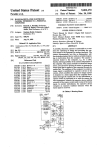


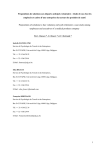
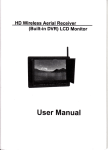
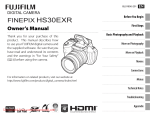
![T] .1](http://vs1.manualzilla.com/store/data/005831826_1-5c5b79be6c7f2f902c022f1ff12b7474-150x150.png)
